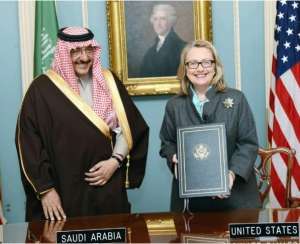Imagine How Future Parents Will Respond to Concerns about Their Son’s Radicalization
While it’s hard to tell from the reporting, it appears that the government tried to claim last week that it wasn’t Mohamed Osman Mohamud’s First Amendment protected but hateful speech that triggered their investigation and entrapment of the teenager, but was instead the subsequent warning Mohamud’s father gave the FBI about his radicalization.
Agents in Charlotte, N.C., picked up on Mohamud’s name in early 2009 while intercepting email traffic of then-U.S. based al-Qaida propagandist Samir Khan.
That August, FBI Special Agent Isaac DeLong was assigned to interview Mohamud’s father, Osman Barre, who feared Muslim extremists were radicalizing his son. Barre had read about Somali youths from Minnesota who were heading overseas to fight, and he worried his own son was trying to fly to Yemen to fight against the West, DeLong testified.
Barre agreed to speak to Mohamud and try to make sure he wouldn’t fly overseas. He took his son’s passport and reported back to the FBI that they had a chat.
Taking that as true (I don’t necessarily believe it, particularly given Hesham Abu Zubaydah’s claim the FBI had him tracking Mohamud even earlier than that), consider the message his father’s testimony now sends to Muslim families worried about their sons getting radicalized. (h/t Teddy, who is far more reliable at this point that Google’s increasingly useless alert system)
[Mohamud’s father] Osman Barre, meanwhile, had phoned the FBI. He told agents that brainwashed Somali kids were flying overseas, and he wanted the bureau’s help. He wanted agents to prevent his boy from getting on a plane.
The agents instead asked him questions about terrorism, which struck a nerve. Osman Barre told the agents he had nothing to hide and that he was grateful to have been given refuge in the U.S. after fleeing the civil war in Somalia.
“Even I say God bless America,” Barre told jurors.
[snip]
Mohamud told his parents he wanted to study at a mosque in Yemen, Osman Barre recalled, and he showed his dad an email about a school there that would teach him Arabic.
The Barres kept talking to their son until he agreed to stay in school. There would be time to study Arabic overseas when he was a grown man, Osman Barre said. He recalled telling his son, “I brought you here to give you a life of prosperity.”
The email Mohamud showed his dad that day was from a Saudi Arabian that he had met at a Portland mosque. Neither Osman nor Mariam Barre knew that the FBI suspected the writer of that email — now identified as Amro Alali — was an al-Qaida recruiter.
FBI agents didn’t share with the Barres that they suspected Mohamud was involved with dangerous extremists, Osman Barre said. Had he been told, he would have reached out to their tight-knit community for help and gotten counseling for their impressionable son.
Barre did exactly what the FBI would hope a father would do: alert the FBI. But rather than helping the father prevent his son from being sucked in, instead the FBI (it claims) used the father’s call as the predicate to suck Mohamud further in, even while they admitted repeatedly he was floundering.
Set aside Mohamud’s guilt or innocence. The message the FBI has sent with its treatment of Mohamud is if family members alert law enforcement to concerns about radicalization, the FBI will then use it as an excuse to entrap their family member.
Just about the least productive thing to do if you want to capture actual threats.

